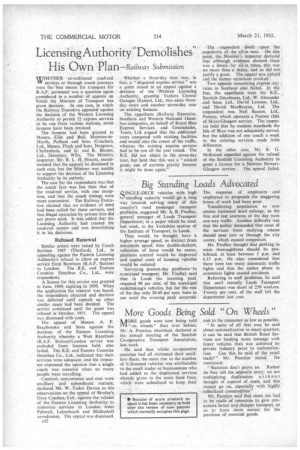Big Standing Loads Advocated
Page 60

If you've noticed an error in this article please click here to report it so we can fix it.
SINGLE-DECK vehicles with high standing capacity would go a long way towards solving many of this country's road passenger transport problems, suggested Mr. A. B. Findlay, general manager of Leeds Transport Department, in a paper which he read, last week, to the Yorkshire section of the Institute of Transport, in Leeds.
They would, he thought, have a higher average speed, as distinct from maximum speed; than double-deckers, collection of fares would be easier, platform control would. be improved and capital costs of housing vehicles would be reduced.
Surveying breent-day problems in municipal transport, Mr. Findlay said that in Leeds the morning peak required 90 per cent, of the municipal undertaking's vehicles, but for the rest of the day only 30-40 per cent, were in use until the evening peak occurred.
The response of employers and employees to proposals for staggering hours of work had been poor.
Transferring population to new estates increased dead mileage, as the first and last journeys of the day were one-way traffic. Another difficulty was that the public demanded that most of the services from outlying estates should pass into or through the city centre, which caused congestion.
Mr. Findlay thought that parking in main thoroughfares should be prohibited, at least between 5 p.m. and 6.15 p.m. He also considered that there were too many automatic traffic lights and that the amber phase in automatic lights caused accidents.
Referring to staff problems, he said that until recently Leeds Transport Department was short of 250 workers. Twenty per cent. of the staff left the department last year.




















































































